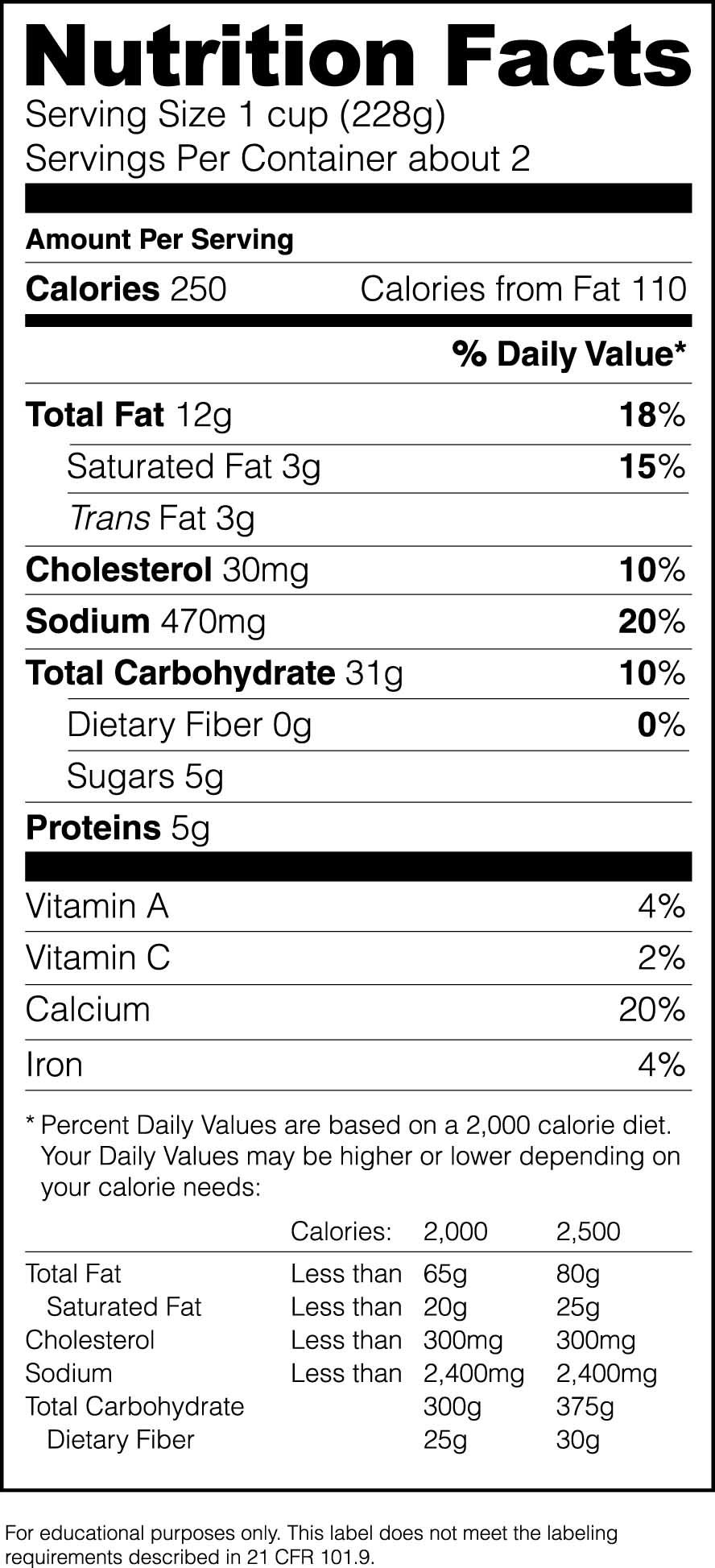That rectangular nutrition label on the side of your cereal box or on the back of that peanut butter jar turns 20 years old this year.
When it was introduced in 1993, the Nutrition Facts rectangle was meant to help people understand how each of their food choices fit into a healthy diet. It was the first time the information had been presented in such a straightforward and uniform way.
"It was revolutionary," said Jessica Leighton, Ph.D., senior nutrition science and policy adviser in the FDA’s Office of Foods and Veterinary Medicine on the agency’s website. "For the first time, people had consistent information they needed right at the point of purchase for the majority of packaged food products."
FDA survey data show that use of the Nutrition Facts label has increased over the past decade. About 54 percent of American consumers now say that they use the Nutrition Facts label on the side of their food when making decisions about what to eat.
Still, as easy-to-read and as useful as the Nutrition Facts label is, there are parts of the label that people often ignore, said Connie Crawley, an Extension nutrition expert with the University of Georgia College of Family and Consumer Sciences.
The calorie counts, total fat counts and sugars usually catch people’s eye first, but other parts of the label are important for eating a healthy diet, she said.
Serving Size: Often people ignore the serving size specified on the label. This is an important piece of information because the serving sizes are sometimes not what people would naturally consume.
“A good example is saying a serving size of a soft drink is 8 oz. on a 20 oz. bottle, yet the person is probably going to totally consume it all at once,” Crawley said.
An entire package of chips or a bottle of soda, may contain two to three times as many calories that are listed as per serving in the Nutrition Facts label.
Fat: Total Fat, saturated fat and trans fat values are all important in seeing how a food fits into a healthy diet. However, when the FDA started requiring trans fats to be listed on the label, people began to focus on that number more than on the total amount of fat and saturated fat in their food.
“I tell people to add both the saturated and trans fats up to know the actual amount of unhealthy fat they are consuming,” Crawley said. “In some cases to reduce the trans fat, the manufacturer increased the sources of saturated fat, like palm oil, to maintain the desired texture or mouth-feel of the food. People did not notice this change. Saturated and trans are both bad for your arteries.”
Carbohydrates – People often do not realize that the amount of sugar listed is included in the total carbohydrates and is not in addition to it. People with diabetes need to focus on the total carbohydrates, since sugar and starch both increase blood glucose levels.
“Some people really get hung up on the sugar and forget the other sources of carbohydrates,” she said.
Fiber – Also filed under carbohydrates on the label, fiber is another nutrient value that people don’t pay enough attention too. Most Americans need to more fiber; ideally a food will have at least 2-3 grams per serving.
Generally natural plant fibers are preferable to added fiber from supplements and fortified fiber-rich foods. The best sources of these types of fiber come from vegetables, like beans and peas, whole pieces of fruit and whole grains.
“Sadly, nutrition labeling on produce is voluntary, so people do not know how healthy it is for them unless there is separate signage where the produce is sold,” Crawley said.
The FDA nutritionists may update the two-decade old nutrition label in the in the coming years to make it easier to understand. If they do change the label, Crawley believes there should serious revisions to the serving size and sugar portion of the label.
More realistic servings sizes would go a long way in helping people understand what they consume on a daily basis.
She also would like to see the sugar content of each product broken down in added and natural sugars. A separate added sugar category would help people make more informed decisions about what they would like to eat.
“Basically, people have to go to the ingredient listing to see how many different forms of sugar are added,” she said. “They also have to see how high on the ingredient list the different types of added sugar are. The first ingredients listed are the greatest in weight in the food, but if there are 3 or 4 different added sugars and they are scattered throughout that ingredient list, people really cannot tell how much there really is.”









